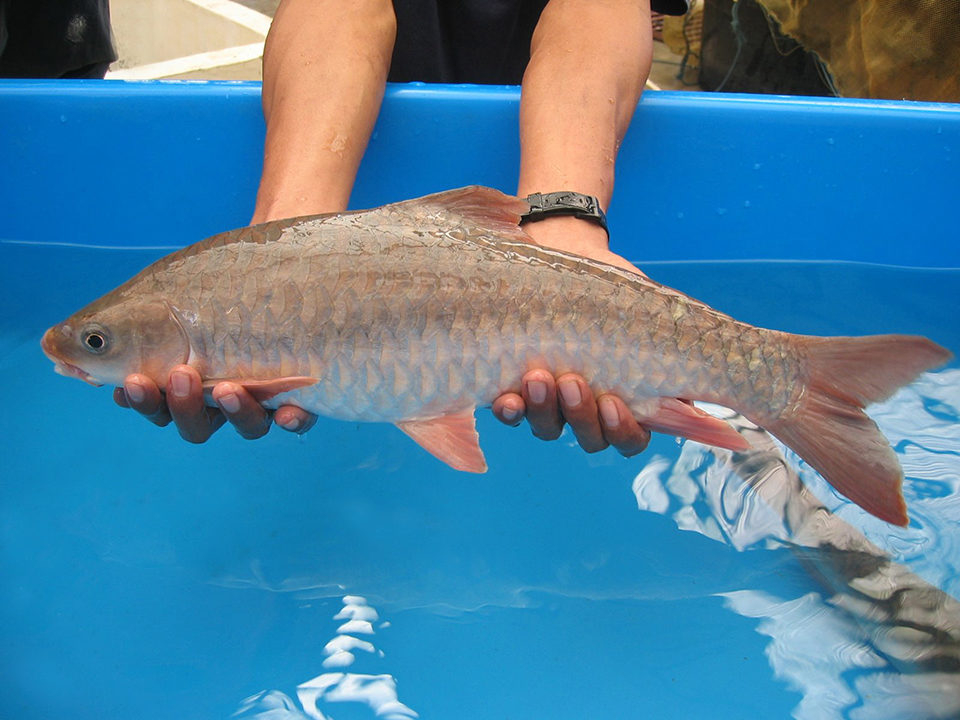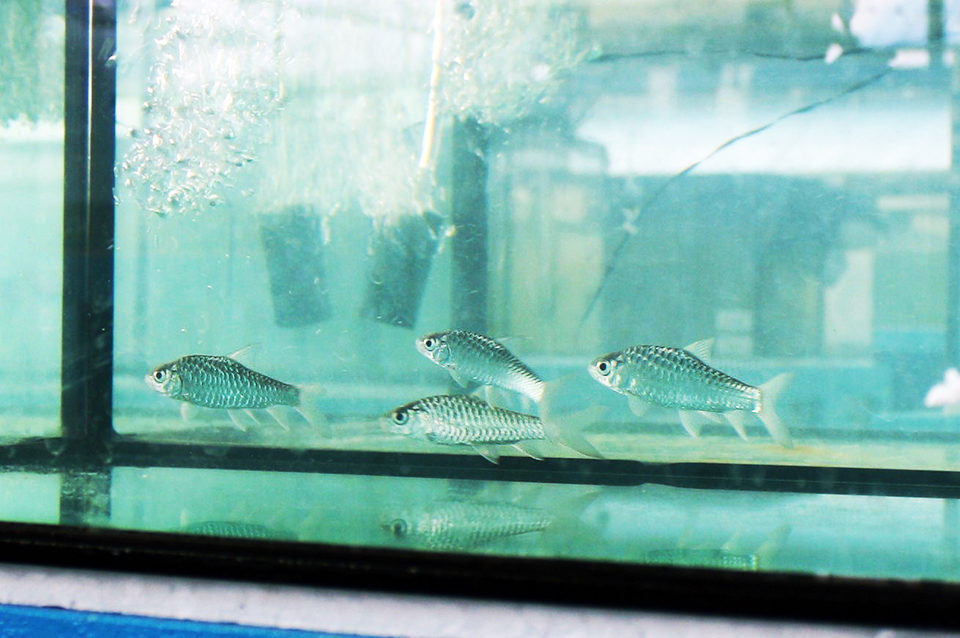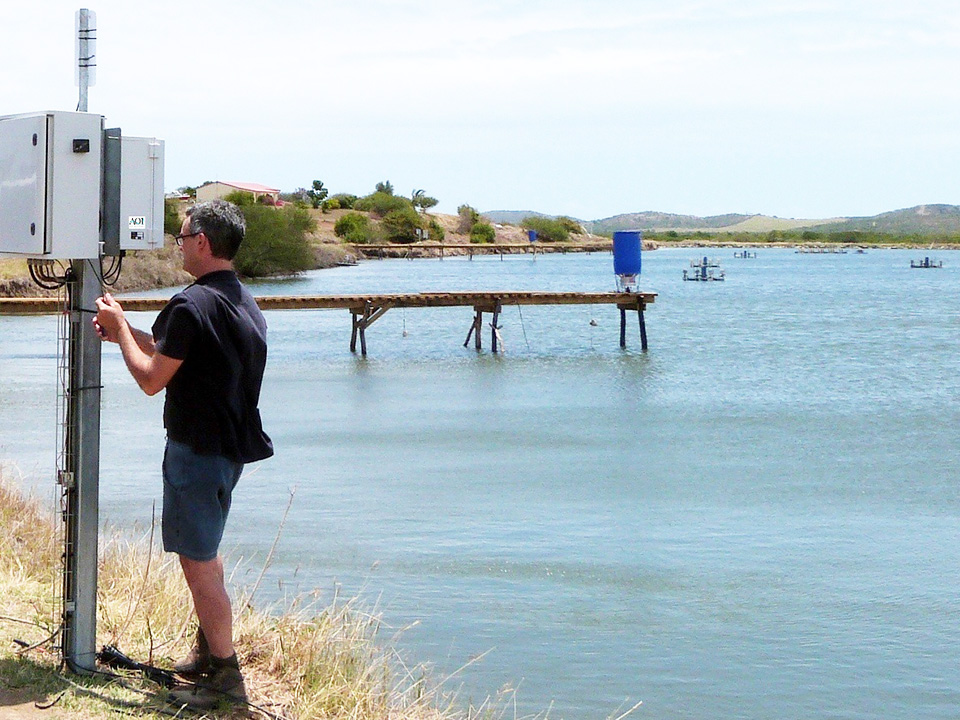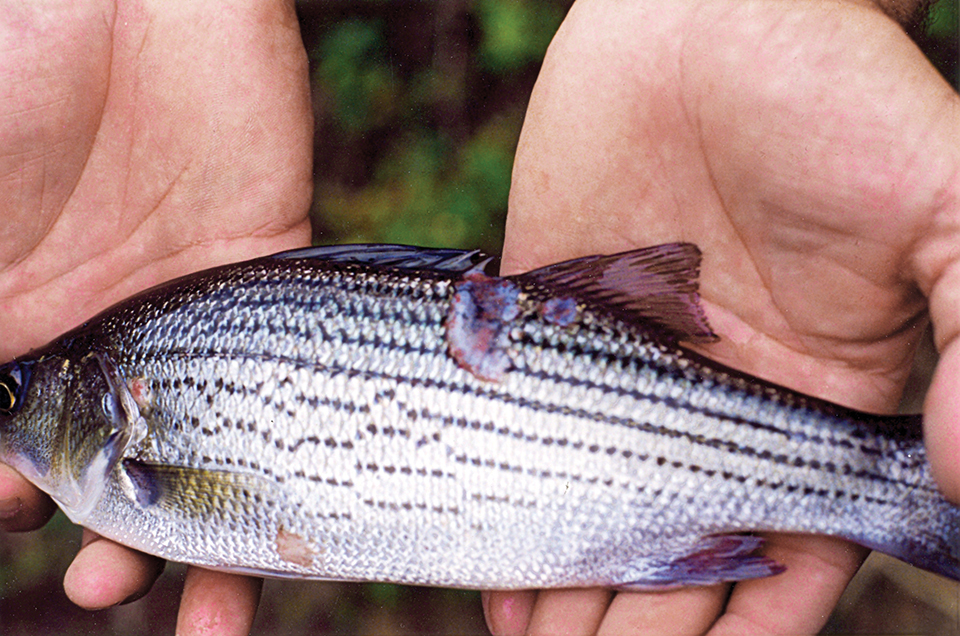Species holds value for food, ornamentals markets

The Malaysian mahseer (Tor tambroides), is a sought-after and highly valued game, food and ornamental fish found throughout Southeast Asia from Indonesia to southern China. This fish is part of an important group of freshwater cyprinids collectively known as mahseers that inhabit mountainous rivers and lakes of the Himalayan belt from Afghanistan to Indonesina and Myanmar. Mahseers form a significant stock of indigenous fish in India, Nepal, Bangladesh and Pakistan with potential for the freshwater aquaculture industry.
Malaysia’s three species of mahseer – T. tambroides, T. douronensis and T. tambra – live in headwaters and the fast-flowing, cool and clear water of upland rivers. As with mahseers in other countries, the natural stock of Malaysian mahseers has rapidly declined in recent years due to environmental changes, human disturbance of aquatic ecosystems and overfishing.
Following the decline in populations of this species in the wild, its market prices rose as high as $80 and $240/kg when sold as food or ornamental fish, respectively. Restaurants in Kuala Lumpur reportedly sell Malaysian mahseer dishes for up to $260/kg. Therefore, there currently is much interest in the biology of this fish and its artificial propagation, both for conservation and for aquaculture production.
Seedstock production
Female mahseers over 2.5 kg in weight are sexually mature, while males reach maturity in 20 months, when they weigh over 0.75 kg. Breeding season usually occurs from July to September. Within this time and during flood periods, the fish migrate to the clearer upside of rivers for spawning. Immediately after spawning or during low-flow periods, the fish conversely move downstream to the large areas of the river to feed. Their eggs are deposited among rocks, where the fry remain to feed on the algae that grow on the rock surfaces.
The first successful artificial breeding of this species was reported in 2005. However, the first commercial breeding occurred in 2006 at the Aquaculture Extension Center of the Malaysian Department of Fisheries in Perlok, Jerantut, Pahang. Females were successfully spawned with hormonal administration, and about 5,000 eggs were obtained. After 72 hours, 4,500 larvae were collected.
The authors showed the larvae should be able to ingest and possibly digest and absorb a 287 µ-diameter formulated diet from seven days after hatching. After this breakthrough, efforts have been made by the government and private sector to culture T. tambroides to meet its high market demand.
Despite the recent success in induced spawning of pond-reared T. tambroides broodstock, the hatchery-reared fingerlings are still mainly produced by two government hatcheries. Their numbers are still too small to meet the demand of the aquaculture industry. Therefore, most Malaysian mahseer farms still rely on wild-caught fingerlings. In the long run, this practice cannot be sustained or expanded unless a good proportion of the cultured fish is kept for breeding programs.
Nutrition, feeds
Malaysian mahseers are bottom feeders in nature, but in captivity, they can be trained to take artificial floating feed. In addition to feeding on algae, aquatic plants, insects, crustaceans, snails, earthworms and some small fish, the fish congregate below the overhanging branches of trees on river banks and wait to feed on fallen fruits. Consumption of toxic fruits in flooded forests can make mahseer meat temporarily inedible at times.
In a successful animal production system, balanced nutrition is a key that leads to the production of healthy, high-quality products. In fish farming, 40 to 50 percent of the production cost is associated with feed. To enhance the development of commercial Malaysian mahseer aquaculture, feeding the fish an optimized diet that meets their nutritional requirements is critically important. Knowledge of the essential nutrients, their sources and effects on the physiological aspects of target species is crucial to produce an optimized diet.
The major essential macronutrients are protein, lipid and carbohydrate. In 2008, Ng Wing Keong and co-workers provided the first published information on the nutrient requirements of Malaysian mahseers. They recommended a dietary protein content of 48 percent with a protein:energy ratio of about 26 mg protein/kJ gross energy for the best fish growth.
However, according to their results, there was no significant difference among the growth performances of fish fed dietary protein levels from 35 to 50 percent. In 2011, Josephine Dorin Misieng and co-workers also showed that a dietary protein content of 40 percent met the protein requirements of this fish.
Lipids act as the main energy source in diets, supplying about two times more energy than protein and carbohydrate do. In some fish, lipids can be utilized to spare dietary protein for growth purposes. Consumption of protein as an energy source, which results from inadequate amounts of dietary lipid, can lead to protein deficiency for fish growth.

In addition, lipids are an important source of essential fatty acids, phospholipids and fat-soluble vitamins. Therefore, lipid was the second quantitative nutrient requirement determined. According to recent studies, it is clear that 5 percent dietary lipid is sufficient to provide the maximum growth of this species.
The authors are currently studying the dietary fatty acid requirements of Malaysian mahseers to aid nutritional knowledge, the main bottleneck in their successful propagation.
(Editor’s Note: This article was originally published in the March/April 2012 print edition of the Global Aquaculture Advocate.)
Authors
-
Ehsan Ramezani-Fard, Ph.D.
Department of Aquaculture
Universiti Putra Malaysia
43400 Serdang
Selangor, Malaysia[109,111,99,46,108,105,97,109,103,64,100,114,97,102,105,110,97,122,101,109,97,114,101]
-
Mohd Salleh Kamarudin, Ph.D.
Department of Aquaculture
Universiti Putra Malaysia
43400 Serdang
Selangor, Malaysia
Tagged With
Related Posts

Responsibility
A look at integrated multi-trophic aquaculture
In integrated multi-trophic aquaculture, farmers combine the cultivation of fed species such as finfish or shrimp with extractive seaweeds, aquatic plants and shellfish and other invertebrates that recapture organic and inorganic particulate nutrients for their growth.

Responsibility
A look at various intensive shrimp farming systems in Asia
The impact of diseases led some Asian shrimp farming countries to develop biofloc and recirculation aquaculture system (RAS) production technologies. Treating incoming water for culture operations and wastewater treatment are biosecurity measures for disease prevention and control.

Innovation & Investment
Acoustic control improves feeding productivity at shrimp farms
In systems recently developed for shrimp farms, passive acoustic-based technology enables sensor-based control of multiple automatic feeders. Improved growth and feed conversion have been recorded at commercial farms using the technology.

Health & Welfare
Antibiotic-resistant bacteria, part 1
No antimicrobial agent has been developed specifically for aquaculture applications. However, some antibiotic products used to treat humans or land-based animals have been approved for use at aquaculture facilities.


